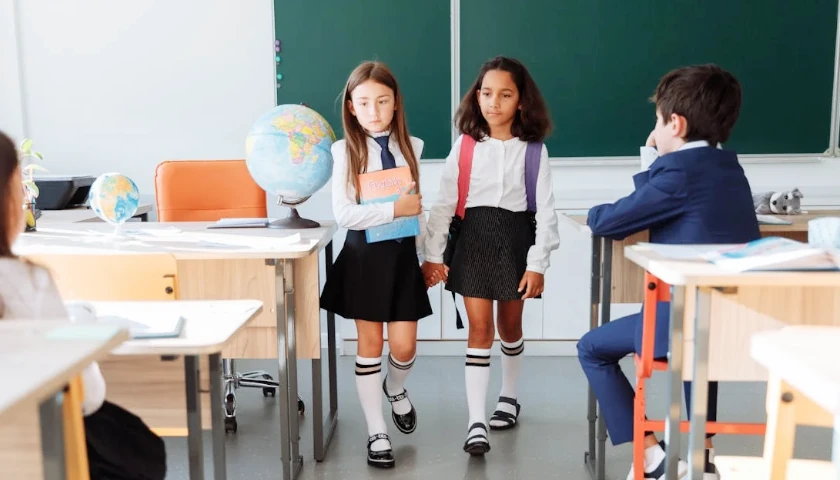by Larry Sand
According to a just-released Education Opportunity in America report by 50CAN, only 39% of public school parents are satisfied with their child’s education.
Other polling results are also discouraging. Released in August, EdChoice’s annual Schooling in America Survey revealed that 64% of parents think K–12 education in America is on the wrong track. Not only is this an eight-point increase from last year, but it is also the highest level of pessimism among parents since the question was first asked in 2014.
Hence, it should be no surprise to anyone that a poll from RealClear Opinion Research discloses that 71% of Americans, including 80% of Republicans, 66% of Democrats, and 69% of independents, support school choice.
And indeed, parental freedom is accelerating rapidly. Over the past three years, 12 states—Alabama, Arizona, Arkansas, Florida, Indiana, Iowa, Louisiana, North Carolina, Ohio, Oklahoma, Utah, and West Virginia—have passed universal or near-universal school choice laws, and more states are set to join them in the coming years.
Three more states could be added shortly, as school choice is on the November ballot in Colorado, Kentucky, and Nebraska. Additionally, Texas is among the states poised to pass sweeping choice measures in 2025.
In all, 32 states have implemented some sort of private choice program thus far, and as EdChoice reports, more than one million children now participate in these programs across the U.S. Moreover, 22 million students—or 40% nationwide—are now eligible to participate.
While education is a hot button topic, the subject has not been a high-priority issue in the presidential campaign. Donald Trump has addressed it a few times, notably asserting, “I’m going to close the Department of Education and move education back to the states.”
Kamala Harris responded to Trump’s comments about closing the DOE in a speech to the American Federation of Teachers, saying, “We are not going to let him eliminate the Department of Education that funds our public schools.”
Harris’s comment is, of course, fallacious. The U.S. Department of Education does not fund public schools to any serious degree. On average, each state derives just 13.6% of funding for public K-12 education from the federal government. Those dollars come with strings attached, and the cost of complying may not be worth ceding control of classrooms, which is why some states are considering weaning themselves off the federal dole.
However the election shakes out, it’s doubtful that the federal hand in education will disappear. So, the best we can do is to minimize it and leave education policy and financing to individual states—with one exception: a national tax credit program. In a system of education tax credits, which currently exists in 20 states, taxpayers—individuals and businesses—get a dollar-for-dollar tax credit for contributions to scholarship-granting organizations (SGOs). So, where tax credits are in play, if a taxpayer owes $10,000 in taxes, he can divert half of it to an SGO, the other half going to the government. The taxpayer is out $10,000 either way, so no tax savings are involved.
Per a recent survey, voters like the idea. Released earlier this month, the Center Square Voters’ Voice Poll, conducted by Noble Predictive Insights, finds that 69% of likely voters say they would support a national tax credit program that allows students to attend a school of their choice, including a private school. Only 20% of voters maintain that students “should attend the schools they are assigned to attend.” Voters on both sides of the aisle are in favor, with 77% of Republicans saying they back a federal school choice program, while 62% of Democrats responded affirmatively.
William Mattox, director of the J. Stanley Marshall Center for Educational Options at the James Madison Institute, writes about another possible federal role. He notes that when it comes time to renew the Child Tax Credit next year, Congress should give “top priority to adopting an enhanced CTC for education freedom of, say, $8,000 per child.”
The current setup is horribly unfair. In states without a school choice program or that limit availability, parents who send their kids to private schools pay twice for education. They are assessed taxes to pay for other people’s children to attend public schools, as well as out-of-pocket costs (tuition, books, materials, etc.) for their own children’s education.
As an abolitionist, I fervently believe that government involvement in education is a terrible idea. But getting the bureaucrats out of the education realm is nigh impossible. However, tax-credit scholarships and rerouting federal child tax credits would certainly be helpful to American families.
– – –
Larry Sand, a retired 28-year classroom teacher, is the president of the non-profit California Teachers Empowerment Network, a non-partisan, non-political group dedicated to providing teachers and the general public with reliable and balanced information about professional affiliations and positions on educational issues. The views presented here are strictly his own.




